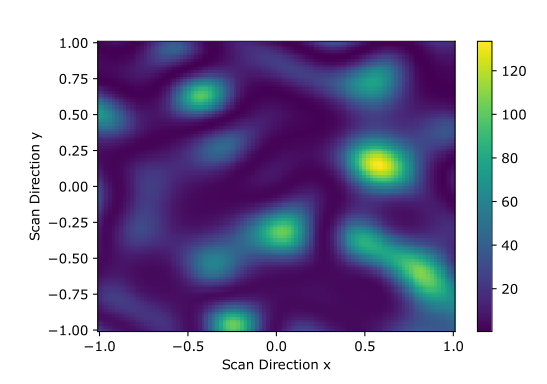orqviz
A Python package for easily visualizing the loss landscape of Variational Quantum Algorithms by Zapata Computing Inc.
orqviz provides a collection of tools which quantum researchers and enthusiasts alike can use for their simulations. It works with any framework for running quantum circuits, for example qiskit, cirq, pennylane, and Orquestra. The package contains functions to generate data, as well as a range of flexible plotting and helper functions. orqviz is light-weight and has very few dependencies.
Getting started
In doc/examples/ we provide a range of Jupyter notebook examples for orqviz. We have four Jupyter notebooks with tutorials for how to get started with any quantum circuit simulation framework you might use. You will find examples with qiskit, cirq, pennylane and Zapata's Orquestra library. The tutorials are not exhaustive, but they do provide a full story that you can follow along.
In this notebook we have the Sombrero example that we showcase in our paper. We also have an advanced example notebook which provides a thorough demonstration of the flexibility of the orqviz package.
We recently published a paper on arXiv where we review the tools available with orqviz:
ORQVIZ: Visualizing High-Dimensional Landscapes in Variational Quantum Algorithms
Installation
You can install our package using the following command:
pip install orqvizAlternatively you can build the package from source. This is especially helpful if you would like to contribute to orqviz
git clone https://github.com/zapatacomputing/orqviz.git
cd orqviz
pip install -e ./Examples
import orqviz
import numpy as np
np.random.seed(42)
def loss_function(pars):
return np.sum(np.cos(pars))**2 + np.sum(np.sin(30*pars))**2
n_params = 42
params = np.random.uniform(-np.pi, np.pi, size=n_params)
dir1 = orqviz.geometric.get_random_normal_vector(n_params)
dir2 = orqviz.geometric.get_random_orthonormal_vector(dir1)
scan2D_result = orqviz.scans.perform_2D_scan(params, loss_function,
direction_x=dir1, direction_y=dir2,
n_steps_x=100)
orqviz.scans.plot_2D_scan_result(scan2D_result)This code results in the following plot:
Authors
The leading developer of this package is Manuel Rudolph at Zapata Computing.
For questions related to the visualization techniques, contact Manuel via manuel.rudolph@zapatacomputing.com .
The leading software developer of this package is Michał Stęchły at Zapata Computing.
For questions related to technicalities of the package, contact Michał via michal.stechly@zapatacomputing.com .
Thank you to Sukin Sim and Luis Serrano from Zapata Computing for their contributions to the tutorials.
You can also contact us or ask general questions using GitHub Discussions.
For more specific code issues, bug fixes, etc. please open a GitHub issue in the orqviz repository.
If you are doing research using orqviz, please cite our paper:
ORQVIZ: Visualizing High-Dimensional Landscapes in Variational Quantum Algorithms
How to contribute
Please see our Contribution Guidelines.

